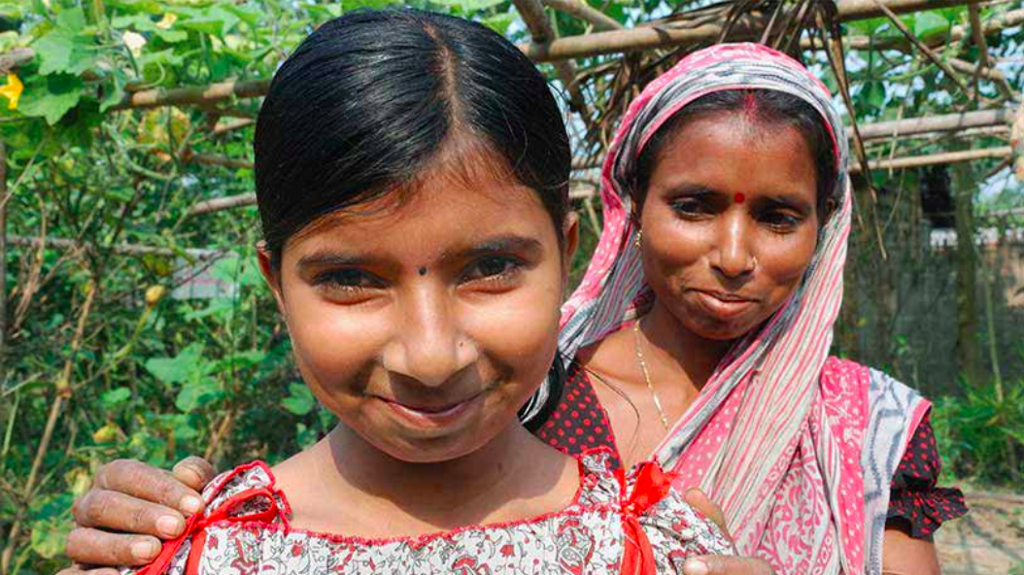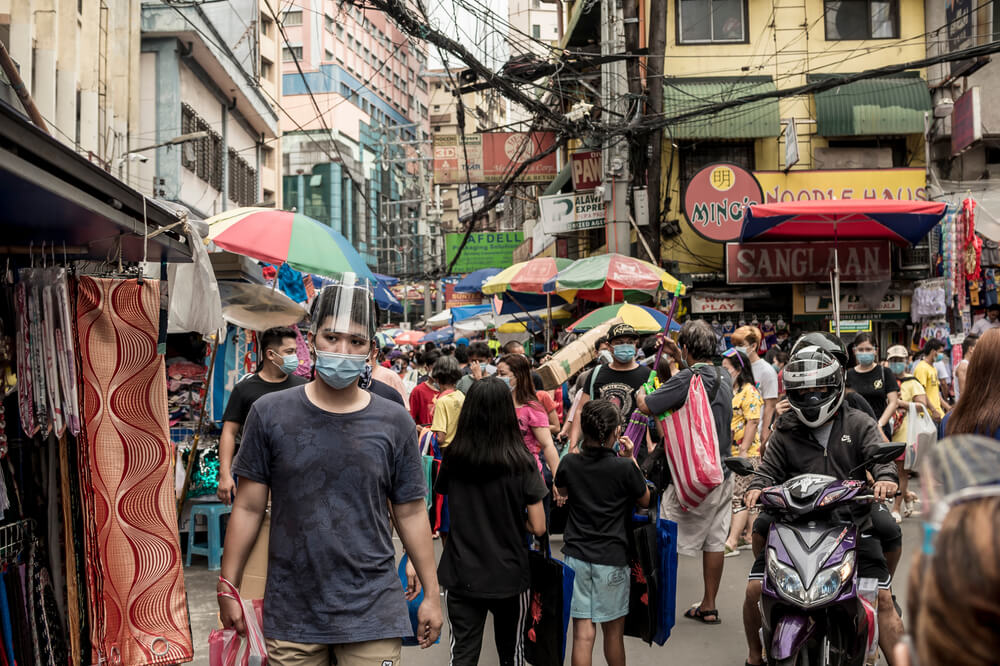That the rising social and economic power of women in the next two decades is a global megatrend bigger than the rise of India and China in the last two decades is an increasingly well-accepted truth.
Less well-known is how the rise of women in those two countries themselves, and in India in particular, can power global gains in education, health, livelihoods and social equity.
From farmers and artisans in rural India to urban entrepreneurs and advocates, India’s 650 million women are the key to meeting all of the global goals for 2030, and especially Sustainable Development Goal №5: “Achieve gender equality and empower all women and girls.”

To scout for signals of such progress, ImpactAlpha’s Esha Chhabra returned to the land of her birth to meet farmers in Uttarakhand, tea pickers in Darjeeling, entrepreneurs in Bangalore, artisans in Manipur and urbanites in Mumbai and Delhi.
“Women Rising in India,” ImpactAlpha’s eight-part series, will explore how the lives of women are changing — and how women are changing life in India. We are pleased to present the first three articles in the series.
Esha Chhabra’s journey through rural and urban India found women are overcoming barriers to build a more resilient and equitable India. Her goal was to find tales of women leaders and women-centric businesses and organizations that are making significant progress toward the global goals.
We all know that India has problems. Stories of sexual violence, child marriages, human trafficking, crowded maternity wards, and poor sanitation are real. So are higher rates of school enrollment and literacy among girls and women. Esha looked for what’s working and why.
Meeting women who are leading India from what’s wrong to what’s working
In Manipur, a mountainous state in the far east of India, old crafts have opened new opportunities. Global connectivity and networks of entrepreneurs are helping the women of Manipur bring their distinctive black pottery to markets in India and around the world.
A growing ecosystem of organizations are supporting the development of women-led artisan businesses. Terra Klay, based in Illinois, is helping women artisans in Manipur boost their incomes, and “prove to the community their right to be respected,” says founder Manvee Vaid. Bringing more women into commercial handicrafts, she says “could unlock immense economic potential, for themselves and for the country.”
How women artisans are reviving ancient crafts and modern livelihoods in rural India
Women are changing the storyline in India’s remote rural regions, where in many places farming doesn’t produce even enough food for families. For decades, men and young people have left their small plots and migrated to India’s cities. But women are not letting their farms and villages slide into neglect. Rather, these unlikely entrepreneurs are leading a rural revival.
Women-centric cooperatives throughout northern India are transforming the landscape, by focusing on organic farming and connecting with urban markets. The powerful idea: a virtuous cycle that restores the land and improves livelihoods.
Women farmers are leading northern India from subsistence to regeneration
India has a thriving startup scene, with as many as 800 new companies a year receiving an increasing amount of investment dollars. Yet the country’s entrepreneurial ecosystem is considered one of the world’s worst for women. Less than 10% of Indian startups are led by women, according to the Saha Fund, the first fund devoted to investing in female founders in India.
That makes the experiences of women founders who have defied the odds all the more important. In conversations in person, by phone and via email, four women who created companies in India, ranging from menstrual-educational tools to a women-centric bank, shared their lessons with ImpactAlpha’s Esha Chhabra.
Four women defying the odds in India’s male-dominated startup scene
Even in Mumbai, India’s most modern city, women must still navigate an oppressive set of taboos. The unwritten rules make them cautious of their movements and their attire, restrict their behavior and infect their thinking. Roshnee Desai’s visual art challenges those social norms. Her works — short films, cartoons and even the upholstery in a Mumbai taxicab — all seek to get people thinking and talking about women’s rights and social issues.
Esha Chhabra provides a guided tour of Desai’s work, which takes on not only sexual harassment but periods, bras, pads and other aspects of women’s everyday lives that are still sensitive in India. The U.N.’s Sustainable Development Goal №5 calls for the end of “all forms of discrimination against all women and girls everywhere.” As a graphic designer and visual artist, Desai is keen on infusing digital art with real-world issues. “It’s about educating and engaging men as much as it is about women,” she says. “It’s not one or other.”
How one artist is changing India’s male-dominated culture, one cartoon at a time
At Jungpana, a remote tea estate in Darjeeling, India’s famous tea growing region, two dozen women gingerly move through the fields and quickly pluck the “two leaves and a bud” that make up the harvested tea leaf. It’s a timeless scene in the region’s tradition-bound tea industry. The pickers in the fields are mostly women. The managers in the estate’s production facilities, where tea is processed and packaged, are all men. Except Lassi Tamang.
In Episode Six of ImpactAlpha’s Women Rising in India series, Esha Chhabra visits Darjeeling, India, where she finds Tamang, a rising star in the India’s tea industry. She’s the first woman factory manager at the Jungpana Tea Estate — and one of the first in all of Darjeeling. She’s part of a new wave of talent on the tea estates: college-educated managers who have bypassed the typical path of family connections into the industry. And she’s part of a change in one of India’s most conservative industries, which is finally starting to give women a chance to prove themselves outside of their traditional roles.
Like Darjeeling tea? Meet one of the first women factory managers in India’s premier tea region
Suchitra Dey and her husband, a truck driver, had struggled for years to earn a living, taking odd jobs and selling vegetables. Seven years ago, Dey and her family finally got a small plot of their own, in the West Bengal village of Shantinagar, or “place of peace.” Significantly, the 39-year-old woman and her husband have equal title to their land. Without legal title, women like Dey could be left homeless, without rights to their homes, if a husband dies or leaves the family.
Land rights for women are getting renewed attention as the key to unlocking progress on a host of Sustainable Development Goals at once: №5, gender equality; №1, no poverty; №3, good health and well-being; and №4, quality education. Since 2009, more than a half-million West Bengal women have gained equal land rights, after Landesa, a non-profit that has championed the strategy, prodded the state government to add a second line to the land-title document, so women’s names could be included. “With this extra line on a patta, we have forever changed these families and their communities, a change that is generational, durable, and structural,” says Landesa’s Gracy Middey. “Human rights work is horridly difficult, and it takes decades to help people. But sometimes it’s as simple as drawing two straight lines on a piece of paper.”
Small Change, Big Impact: The one-line revolution in land rights in rural India
ImpactAlpha’s Women Rising in India series showcases people and projects that are advancing the global Sustainable Development Goals.











